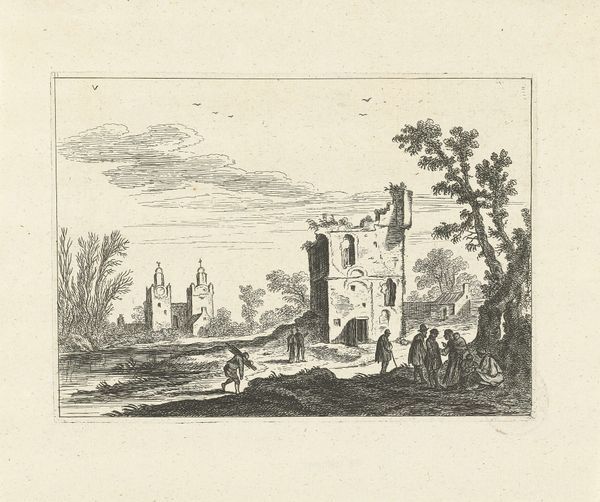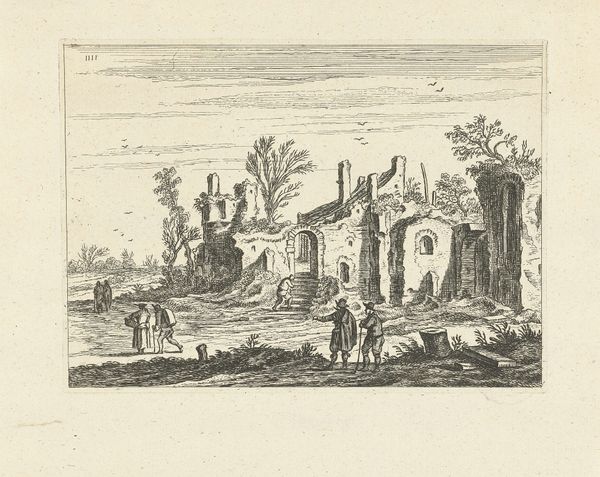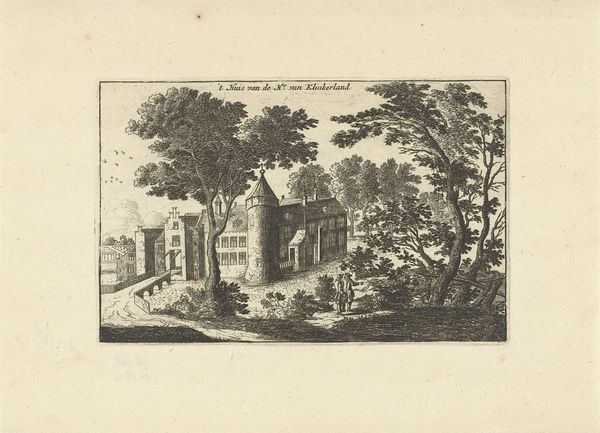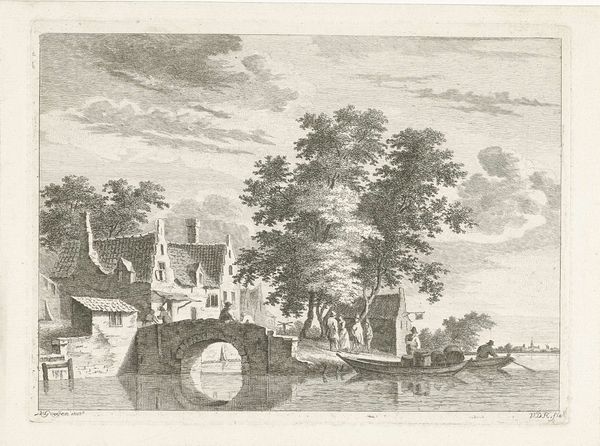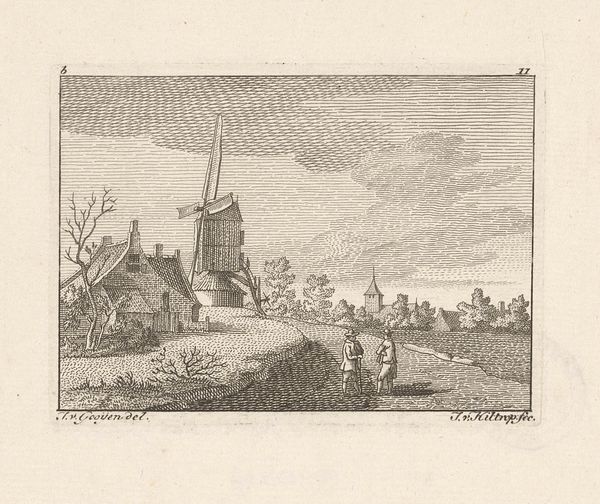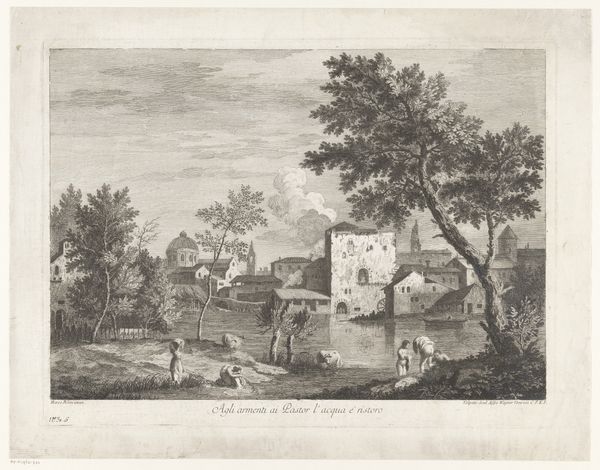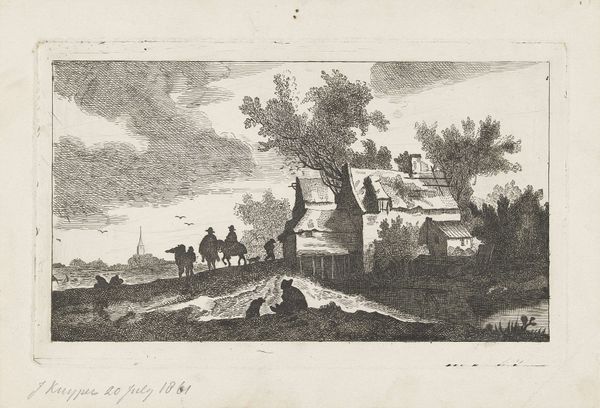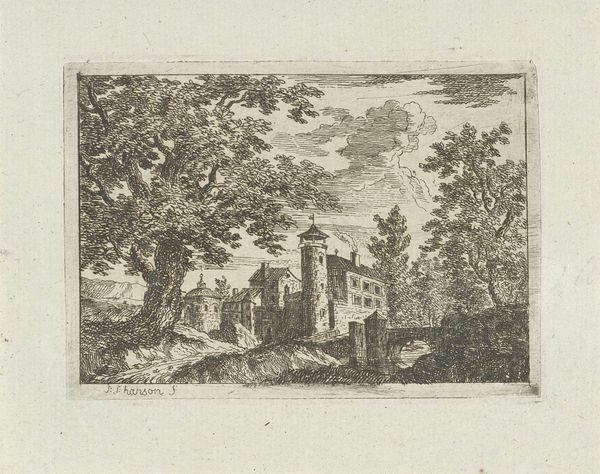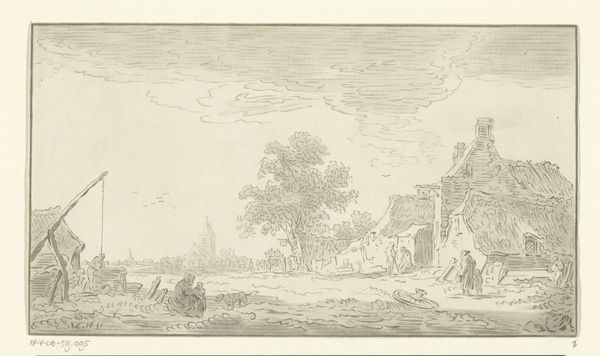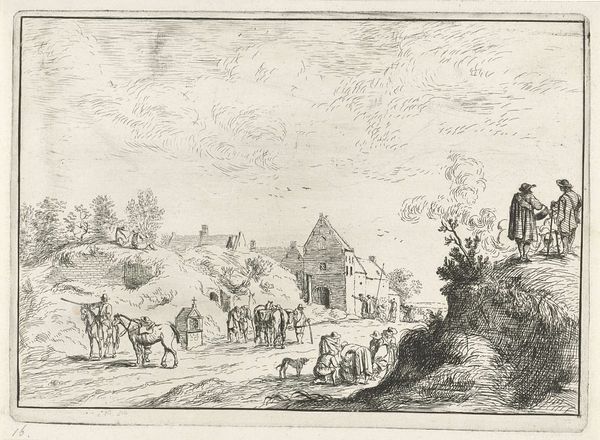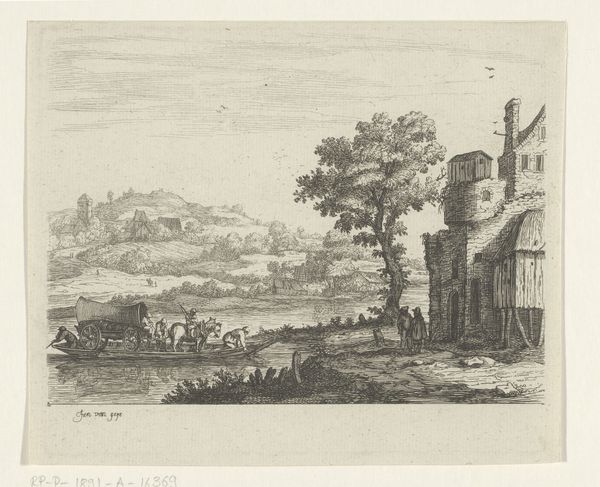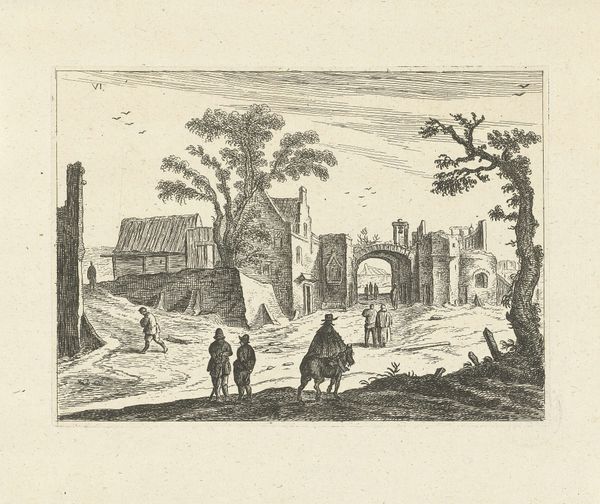
print, engraving
#
dutch-golden-age
# print
#
landscape
#
genre-painting
#
engraving
#
realism
Dimensions: height 128 mm, width 176 mm
Copyright: Rijks Museum: Open Domain
Editor: Here we have Johannes Gronsveld’s "Landschap met dorp aan rivier," which roughly translates to "Landscape with village on a river," created sometime between 1679 and 1728. It's an engraving, so a print. The composition has a wonderfully casual, almost snapshot-like quality to it. How do you interpret the artist’s choices in this work? Curator: Its intrinsic structure is carefully constructed. Notice the stark contrast of textures—the rough thatching against the smooth water surface. How do these contrasts operate within the overall design? Editor: I see what you mean. There's a definite emphasis on texture and shape; the linear precision used to describe the natural world contrasts strongly with the broad shapes used for the buildings. The overall impression feels quite balanced. Do you think the texture holds any meaning here? Curator: Yes, precisely. Texture, when approached through formalism, has profound meaning. Consider the rough thatch, an organic form depicted through dense, ordered lines. Do you observe a similar treatment in the rendering of the human figures and architecture? Editor: Absolutely. There's a sort of ordered chaos, a way that lines interact and overlap, to describe surfaces as both busy and structured, but somehow calm. Curator: Exactly. Further observe the interplay between light and shadow achieved through varying densities of lines, the organization of this engraving into distinct areas. What philosophical implications does this structure suggest? Editor: Well, maybe this tension between order and chaos in the lines reflects how humans impose organization on nature or maybe how we build structures. Curator: A cogent observation. Formal analysis brings into view an array of potential meanings locked in the artwork. Do you feel this method is limited in any aspect? Editor: Perhaps. Sometimes it feels that this way, context might be missed out, and we need other methods too, to bring everything together. Curator: A judicious perspective. Remember, critical views always add layers to an artwork, revealing complexity that might otherwise remain concealed.
Comments
No comments
Be the first to comment and join the conversation on the ultimate creative platform.
